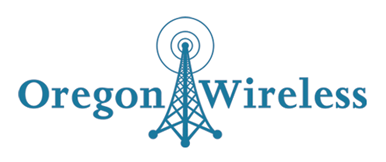Support
Having problems? Check these things first:
If you have no connection to the Internet, you should try:
- First, wait for about 15 minutes and try again. Sometimes very short outages occur due to atmospheric conditions or network congestion. Waiting just a few minutes is often the best fix.
- Verify the physical connection between the Oregon Wireless radio antenna or modem and your computer or router.
- Verify that that the Oregon Wireless radio has power (the power light on the power injector is lit.)
- Verify the connection (cabled or wireless) between your router (if you have one) and your computer.
- Verify that your router has power.
- If you have other computers on your local area network (LAN), check to see if you can reach them. If not, the problem is local to your LAN.
- Try resetting your router (often unplugging it and plugging it back in is the easiest way to do this.)
- Try rebooting your computer. Sometimes your computer’s network devices can stop working due to minor hardware or software problems. A reboot can often straighten these things up.
If your Internet connection seems abnormally slow, you should try:
- Check to make sure you do not have a streaming video or download occurring on your computer. This will slow down your web browser access.
- Check for other users on your local network (LAN.) Are there other users watching streaming video, playing Internet games, or downloading files? These activities consume significant amounts of bandwidth and will slow down other users.
- It is sad and true that malware (viruses, adware, trojans, etc.) can slow down your computer and Internet connection. This is true because they use computer and Internet resources to perform their dirty work. The Internet is not a safe place when it comes to such intruders. We can’t stress enough how important it is to have a good antivirus package installed (and kept up to date) on your computer. It is also important to scan your computer periodically with malware detection tools such as AdAware and SpyBot. Make sure that you have a firewall installed and running (Windows XP and later have a built-in firewall, simply make sure it’s turned on.) Finally, make sure the automatic update feature in your operating system is turned on to ensure you have the latest security fixes.
- Internet connection speed can vary greatly due to network loading. Monitor the connection speed over a period of 24 hours. You can get a quantitative measure of your Internet connection speed by visiting theWIMI site.
Tools
Antivirus
There are a large number of antivirus software packages available, some free, some paid for. Here are a few that you might wish to consider:
- Norton Antivirus — Paid subscription, has optional features including firewall and other PC security capabilities.
- McAfee — Paid subscription, has optional features including firewall and other PC security capabilities.
- AVG — Paid and free versions.
Malware
Malware (short for “malicious software”) includes not only viruses but advertising software that hijacks your browser for advertising purposes and trojans, which hijack your computer for nefarious purposes, such as spamming and stealing your personal information. Malware is a very serious problem on the Internet. It is easily “picked up” not only through E-mail, but at music sharing and Internet gaming sites, as well as other sites that operate in the shadows of legitimacy. As always, the best protection is to avoid such sources of infection, but it’s still all too easy to end up afflicted with one of these little packages. Most antivirus packages have malware detection components that will help protect you from malware transmitted by E-mail and detect it when it becomes resident on your computer. In addition, Microsoft Windows XP and later have some Malware removal capability built in. However, you can still benefit from third party Malware scanners.
- AdAware — Both paid and free versions, scans for adware, trojans and viruses.
- Spybot Search & Destroy — Free, scans for adware and trojans.
Note that we have encountered severely infected PCs (one infection often opens the door for others) where both AdAware and Spybot had to be used multiple times before all of the problems were cleaned up.
Customer Support Request
Give us a call at (541) 568-2000 or send us an email using the form below and we’ll be happy to help you.
